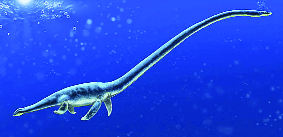The Wonderful World of Bird Beaks
A bird’s beak, or bill, is not just for gathering food. They can be used for grooming, fighting, courtship display, feeding young, nest-building, manipulating objects and even regulating temperature. All in all, beaks are quite the multifunctional tool.
Here are some of the world’s more bizarre beaks and their specialisations.
Toco toucan
The toco toucan’s impossibly showy beak constitutes one-third of the bird’s total length. But it is not just for show, this multi-purpose appendage can be used to collect and skin fruit, frighten predators, attract mates and defend territory. Recent research has also shown that it also helps to keep the bird cool in the heat of the tropical day.
Oriental pied hornbill
It would be difficult to miss this mighty beak, which has to be supported by powerful muscles and fused vertebrae. It is used to catch prey, fight and preen. However, the most recognisable feature of most hornbills is the hollow structure along the top of the bill, called a casque. This reinforces the beak and may be used by males to fight, attract females and resonate sound.
Bald eagle
The wicked-looking beak of the bald eagle is typical for a bird of prey: it is strong and sharply curved for tearing flesh into easy-to-swallow chunks from fish, mammals and other birds. These beaks can also pierce and remove fur and feathers from prey.
Sword-billed hummingbird
The sword-billed hummingbird’s beak is remarkable because it is longer than the rest of its body. The extraordinary length of the hummingbird’s beak and tongue, are adaptations to feeding on nectar from flowers that have long petals, such as species of passion flower. It is a nice example of co-evolution.
Dalmatian pelican
There are big beaks and then there are pelican beaks.
Pelican feed almost entirely on fish that they scoop out of the water into the enormous throat pouch – the water is then drained out and the fish swallowed. The hook at the end of the top mandible is used to spear fish, which are tossed into the air before being swallowed.
American flamingo
It’s a flamingo’s one-legged stance that it is widely famed for, but flamingo beaks are equally remarkable. Unlike most birds flamingos filter feed, in a similar manner to whales.
When filtering, a flamingo’s head is held upside down in water for long periods, and consequently the jaw is reversed with the lower bill larger and stronger than the upper one.
Red-necked avocet
All four species of avocet have peculiarly shaped beaks that are long, thin and curve upwards. They sweep these slender bills from side to side, skimming mud and surface water. This action stirs up small invertebrates and the birds then use their beaks like tweezers to pick out individual prey.
Southern yellow-billed hornbill
The formidable-looking, heavy beak of this hornbill is used to forage for seeds, small insects and spiders on the ground. The birds then jerk their head to toss the food to the back of the throat. In this species, the casque on the top mandible is not as obvious as in many other hornbills, such as the Oriental pied hornbill above.
Spoonbill
The shape of a spoonbill’s beak shouldn’t come as any surprise. They wade through shallow water, stirring up mud and debris, swinging the partly open beak from side to side through the water. When the long, flat, spatulate bill touches prey it snaps shut, before the prey is pulled from the water and swallowed.
Black skimmer
The large and unequal red and black beaks of the skimmers are both unusual and unique. The skimmers fish by dragging, or skimming, the longer lower mandible through the water as they fly low and fast over the surface of shallow water. The lower mandible snaps shut on any small fish that are caught.
Red crossbill
Crossbills have one of the most peculiar and specialised beaks in the bird world. The crossed bill tips may look odd, but it is in fact a clever adaptation to getting seeds out of closed pine cones.
The bird inserts the tips of its bill under a cone scale and bites down. The result is that the scale is prised open, exposing the seed. Interestingly, each species’ bill shape is optimised for opening seeds from different species of conifer.
Australian pelican
Pelicans have some of the longest beaks in the avian world, with sizes approaching half a metre in length. Acting like a net, a pouch can hold up to 13 litres of water.
When not feeding, the enormous pouches are folded and can be quite colourful, particularly during the breeding season.
Long-billed curlew
As far as long thin bills go they don’t get any more impressive than the curlew. The remarkably long and slender beak curves downward and is the perfect adaption for probing mudflats, and very soft ground, for worms and other invertebrates. The beak can measure 20 cm or more in length.
Collared aracari
The large showy beaks of aracaris, like all toucans, look very heavy and not suitable for flight. They are, in fact, extremely thin and aerodynamic, re-inforced with a crisscross of lightweight rods made of bone. The widely spaced tooth-like protrusions on the upper mandible of the collared aracari help them catch and grasp fruit.
















Recent Comments